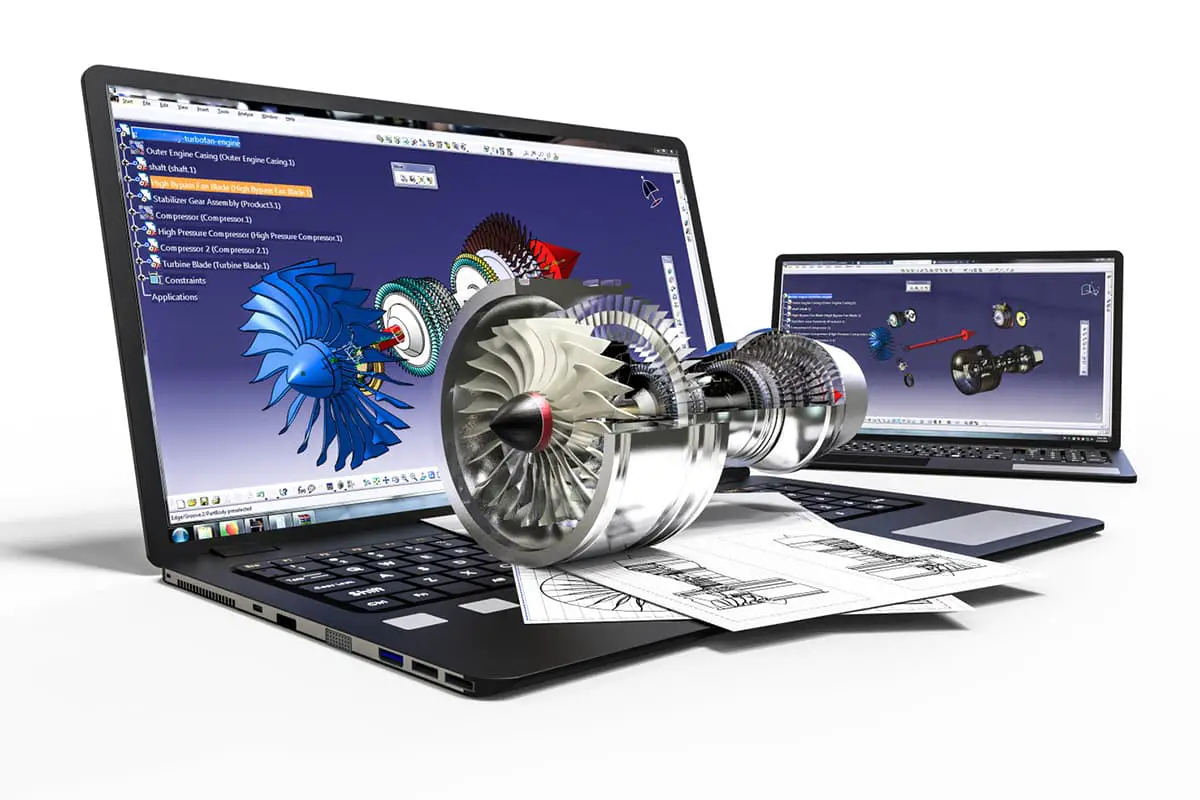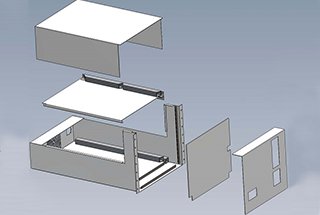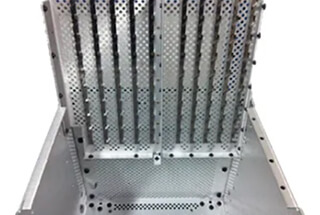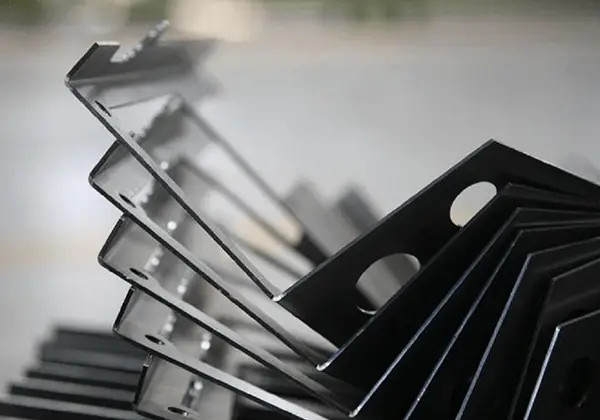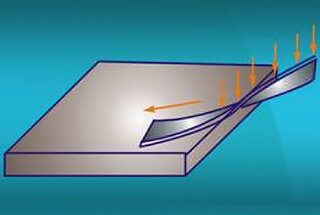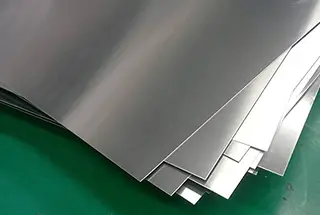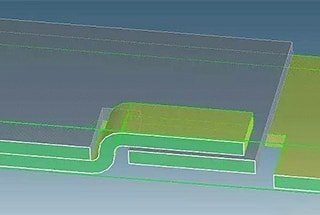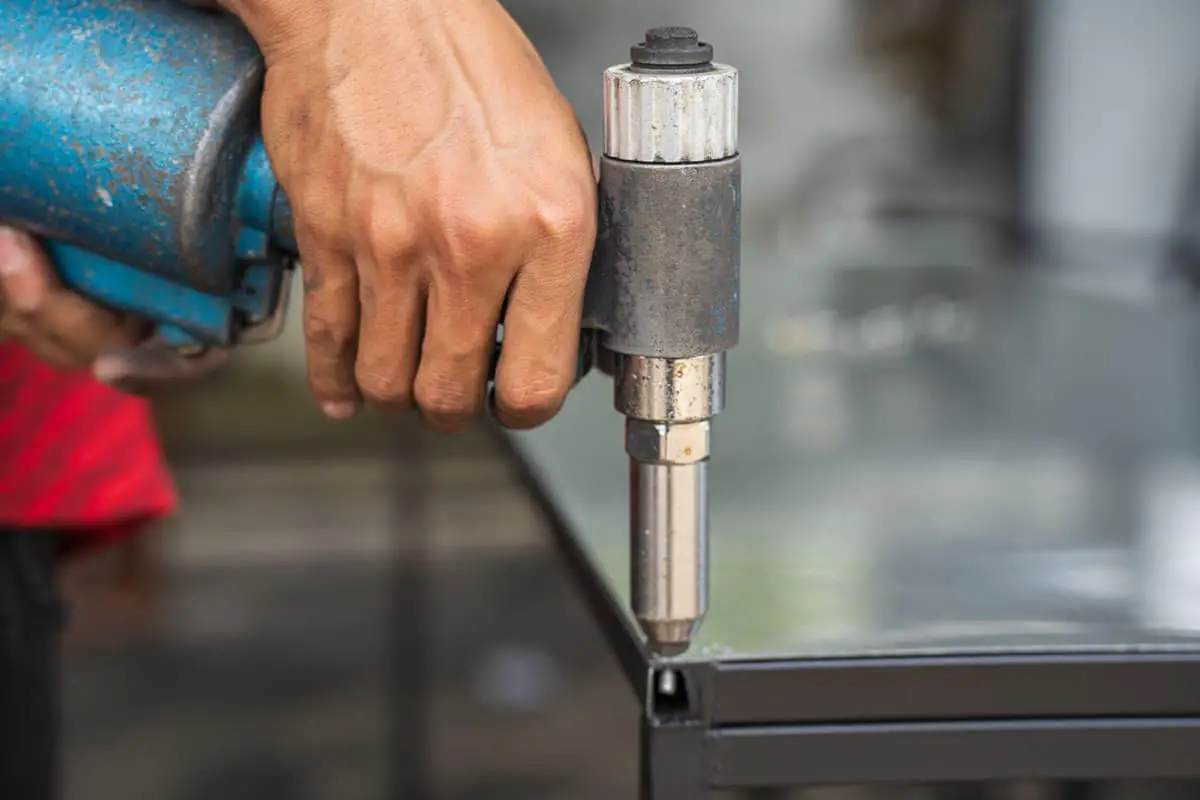
Ever wondered what makes a sheet metal fabrication engineer truly exceptional? This blog post uncovers the essential skills and knowledge you need to thrive in this dynamic field. From understanding critical dimensions to mastering cutting-edge software, learn what sets top engineers apart and how you can elevate your own expertise. Dive in to find out!
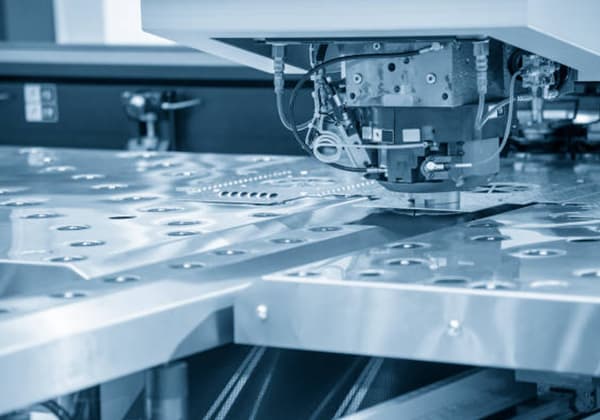
How to be an excellent sheet metal fabrication engineer?
With the rapid development of technology and the constant launch of new products, sheet metal, which serves as the basic framework for various products, has also been widely used.
Due to higher and higher demands for product appearance, the structural processing of sheet metal is also continuously improving.
As an engineer engaged in sheet metal processing and fabrication, it is necessary to think about how to adapt to the development of the industry and enhance competitiveness.

An excellent and competent sheet metal fabrication engineer should at least possess the following abilities:
1. Understanding of product, component functions, and assembly process, and mastery of key and critical dimensions
Firstly, it is necessary to understand what the component is used for, who the customer is, the severity of the customer’s quality requirements (e.g. some customers focus more on functionality and have less stringent requirements for product appearance, while others have strict requirements for both functionality and appearance), the approximate order volume per year, the delivery time for the first batch of orders, etc.
Understanding these aspects is crucial in choosing the right process.
Secondly, it is important to understand the role of the component in the product and what subsequent processes it will undergo (such as electroplating, heat treatment, etc.), and whether the dimensions and functionality will be affected (such as electroplating often causing the shaft dimension to increase and the hole dimension to decrease, and heat treatment often causing deformation of the component).
Thirdly, it is necessary to understand the assembly process of the product, the interrelationship between components, and the key and critical dimensions, which often affect the functionality of the product (such as plug-in force, grip force, lifespan, etc.) and the compatibility with other related components (such as compatibility with plastics, male and female components compatibility), and to master whether these critical and important dimensions will vary in the assembly process.
These dimensions should be guaranteed absolutely during production, and therefore, some measures should be taken in design to ensure that these dimensions meet the drawings.
2. Capability in mechanical drafting and technical drawing
Mechanical drafting and technical drawing capability are the basic requirements for an engineer. If one cannot understand orthographic projection, isometric drawing, dimensional tolerances and fits, shape and positional tolerances, how can he/she design?
Therefore, mechanical drafting and technical drawing are the foundation. Additionally, it is important to understand the different drafting and standards in different countries and regions and be able to use them effortlessly.
3. Ability to use engineering computer and related engineering software.
As society progresses, many factories and enterprises have abandoned their drawings and pencils, and have adopted CAD/CAM systems. The CAD system not only has a high work efficiency and low labor intensity, but also has clear drawings and is less prone to errors.
It is being adopted and promoted by more and more enterprises. If you are not proficient in using engineering computers and related engineering software, you will become an old-fashioned relic that will be eliminated by society, just like a farmer who uses a hoe in a modern farm.
Therefore, a qualified and competent engineer should not only be proficient in using computers and related engineering software, but also have a certain level of foreign language proficiency.
Otherwise, in this information age, they will become the new generation of illiterates who cannot accept new information.
4. Ability to analyze technology.
Since parts are designed by product design engineers, machining is not their expertise. They tend to focus on the function of the parts when designing and give less consideration to their machinability. Some parts may have poor machinability.
For example,
As a manufacturing engineer, when you receive a part drawing, you must first have a concept in mind, where the hardest dimension or function to guarantee is, what is its machinability, and can it be produced more ideally with the current common model? Is the process stable?
If not, how can it be modified more reasonably without affecting the function?
Only by having a good understanding of machinability can you propose reasonable and ideal improvement plans and coordinate with relevant product design engineers to solve related problems.
5. Possess professional machining knowledge.
Establishing good technology requires a detailed understanding of various processing equipment.
6. Ability to perform feasibility analysis
Feasibility analysis is a critical reflection of a die casting engineer’s foundation, capability, practical experience, meticulousness, and the comprehensiveness and depth of problem-solving.
As a die casting engineer, when they begin to arrange the process, they should consider how the part is shaped step by step, what the forming steps are, where the positioning holes are placed, what the shape is, how to arrange them, how to ensure the key and critical dimensions, what stations are needed, and whether the operation is convenient.
“All roads lead to Rome,” but the simplest and quickest road may only be one. You have to balance your conditions such as finance, time, purpose, and various subjective and objective factors to compare, choose the best and avoid the worst through feasibility analysis.
In the same vein, as a cold forging engineer, you have to perform feasibility analysis based on the existing conditions such as the tonnage of various machines, parameters, monthly output of parts, delivery time, cost, existing processing capabilities, and other subjective and objective conditions, to achieve the best combination and provide excellent products to meet customer needs.
If abnormal situations occur due to insufficient design personnel skills, lack of experience, lack of consideration, and unscientific arrangement, the consequences for the production unit are often fatal.
7. Ability to handle abnormal situations
Handling abnormal situations can reflect a person’s overall skill quality and coordination and communication ability.
Moreover, by handling abnormalities, learning from experiences, and enhancing one’s own abilities.
In this comprehensive guide to sheet metal processing, we will delve into various techniques and methods used in the industry.
The first chapter focuses on cutting processes, which are essential for shaping sheet metal into desired forms.
Section 1.1 covers LASER cutting, starting with an explanation of the underlying principles of LASER machine tool processing in 1.1.1. We then explore LASER processing techniques in 1.1.2, discussing the advantages and applications of this cutting method.
Next, in section 1.2, we introduce NCT (Numerical Control Turret) punching machines. We begin with a detailed introduction to the machine tool in 1.2.1, followed by an examination of the processing parameters in 1.2.2. In 1.2.3, we discuss common processing methods, and finally, we delve into NCT processing techniques in 1.2.4.
Section 1.3 is dedicated to wire cutting, a versatile and precise method for cutting complex shapes and contours in sheet metal. We will discuss the process, its benefits, and its applications in various industries.
Lastly, in section 1.4, we cover shearing machines, which are used for straight-line cutting of sheet metal. We will discuss the principles, advantages, and limitations of this cutting method, as well as its role in the overall sheet metal processing workflow.
Read it here: Sheet Metal Fabrication Handbook – Cutting
In the second chapter of our sheet metal processing guide, we explore various forming techniques that are crucial for creating the desired shapes and features in sheet metal components.
Section 2.1 discusses the process of partial shearing, which involves cutting sheet metal partially to create specific shapes or features without completely separating the material. This technique is useful for creating tabs, notches, and other intricate details.
In section 2.2, we examine the process of bridge drawing, which is used to create raised sections or bridges in sheet metal components. This technique is essential for adding structural support and rigidity to the final product.
Section 2.3 delves into the process of creating louvers, also known as slotted holes or ventilation openings. These features are commonly found in enclosures, cabinets, and other sheet metal products that require airflow and heat dissipation.
In section 2.4, we explore the processes of hole extrusion and embossing. Hole extrusion involves creating holes with a specific shape or profile, while embossing is used to create raised or recessed features on the sheet metal surface. Both techniques are essential for adding functionality and aesthetics to sheet metal components.
Finally, in section 2.5, we discuss the process of creating corner pads, which are used to provide support and reinforcement to the corners of sheet metal components. This technique is crucial for ensuring the structural integrity and durability of the final product.
Read it here: Sheet Metal Fabrication Handbook – Forming
In the third chapter of our sheet metal processing guide, we focus on the folding machine, a vital tool for bending sheet metal components into their final shapes.
Read it here: Sheet Metal Fabrication Handbook – Folding
In the fourth chapter of our sheet metal processing guide, we discuss various methods of joining and fastening sheet metal components to create a cohesive final product.
4.1 In section 4.1, we explore TOX riveting, a mechanical joining technique that uses a specialized rivet to create a strong and reliable connection between sheet metal parts.
4.2 Section 4.2 is dedicated to welding, a widely used method for joining sheet metal components. We cover the following topics in this section:
4.2.1 Definition: We provide a clear and concise definition of welding and its role in sheet metal processing.
4.2.2 Welding methods and classification: We discuss various welding methods and their classifications, highlighting the differences and applications of each technique.
4.2.3 Existing welding equipment composition and capabilities: We examine the components and capabilities of modern welding equipment, emphasizing their importance in achieving high-quality welds.
4.2.4 Welding representation methods: We explain how welding symbols and notation are used to convey essential information about the welding process.
4.2.5 Welding manufacturing processes: We delve into the various welding manufacturing processes, discussing their advantages, limitations, and applications in sheet metal processing.
4.3 In section 4.3, we discuss hole extrusion riveting, a technique that involves creating a hole in the sheet metal and inserting a rivet to join the components securely.
4.4 Finally, in section 4.4, we explore blind rivet fastening, a versatile and efficient method for joining sheet metal components in situations where access to both sides of the material is limited.
Read it here: Sheet Metal Fabrication Handbook – Joining and Fastening
In the fifth and final chapter of our sheet metal processing guide, we explore various surface treatments that enhance the appearance, functionality, and durability of sheet metal components.
5.1 Section 5.1 discusses brushing, a technique used to create a uniform, directional finish on the sheet metal surface, improving its appearance and reducing surface imperfections.
5.2 In section 5.2, we cover shot blasting and sandblasting, processes that clean and prepare the sheet metal surface by removing contaminants, rust, and scale.
5.3 Section 5.3 delves into metal plating and chemical treatments, which protect and enhance the sheet metal surface. We cover the following topics in this section:
5.3.1 Plating methods: We discuss various plating techniques and their applications in sheet metal processing.
5.3.2 Pre- and post-plating treatments: We explore the importance of proper preparation and finishing steps in the plating process.
5.3.3 Representation methods for metal plating and chemical treatments: We explain how to convey essential information about these processes using symbols and notation.
5.3.4 Electroplating and chemical plating processes: We discuss the differences, advantages, and applications of these two plating techniques.
5.3.5 Chemical treatments for metals: We explore various chemical treatments used to enhance the properties and appearance of sheet metal components.
5.3.6 Aluminum surface treatments: We discuss specific surface treatments for aluminum sheet metal components.
5.3.7 Metal plating and chemical treatments in sheet metal manufacturing: We examine the role of these processes in the overall sheet metal manufacturing workflow.
5.4 In section 5.4, we discuss painting (baking paint), a process that applies a protective and decorative coating to sheet metal components.
5.5 Section 5.5 covers silk-screening and pad printing, techniques used to apply logos, labels, and other graphics to sheet metal components.
5.6 In section 5.6, we explore polishing, a process that enhances the appearance and smoothness of sheet metal surfaces.
5.7 Finally, in section 5.7, we discuss grinding, a technique used to remove imperfections and achieve a smooth, uniform surface on sheet metal components.
Read it here: Sheet Metal Fabrication Handbook – Surface Treatment
In conclusion, this comprehensive guide to sheet metal processing covers a wide range of techniques and methods essential for creating high-quality sheet metal components. We have explored various stages of the process, including cutting, forming, bending, joining, and surface treatments.
Throughout the guide, we have discussed the principles, advantages, and applications of each technique, providing valuable insights into the sheet metal processing industry. From LASER cutting and NCT punching to welding and metal plating, we have delved into the intricacies of each process, highlighting their importance in achieving the desired functionality and aesthetics of sheet metal products.
By understanding the various processes and techniques involved in sheet metal processing, professionals in the field can make informed decisions about the best methods to use for their specific applications. This knowledge is crucial for ensuring the production of high-quality, durable, and functional sheet metal components that meet the demands of various industries.
Overall, this guide serves as a valuable resource for anyone involved in sheet metal processing, offering a comprehensive overview of the techniques and methods that are essential for success in this dynamic and ever-evolving field.

